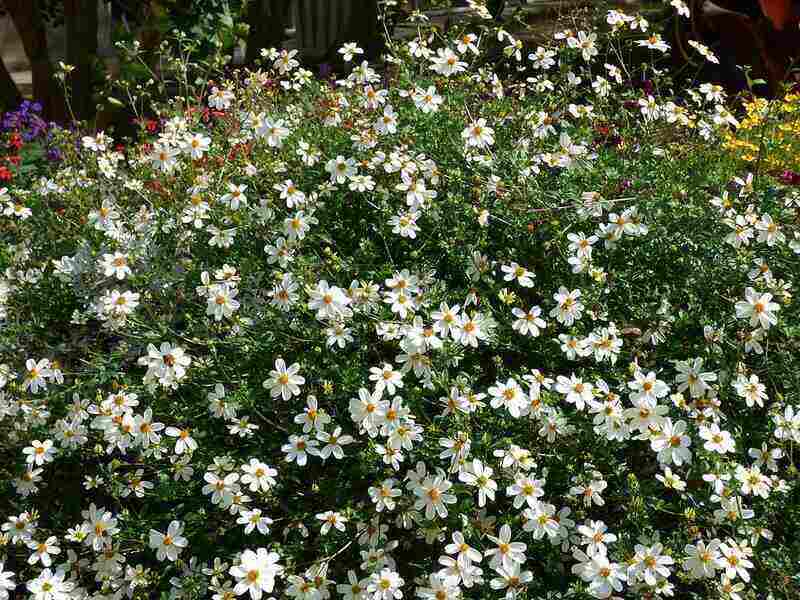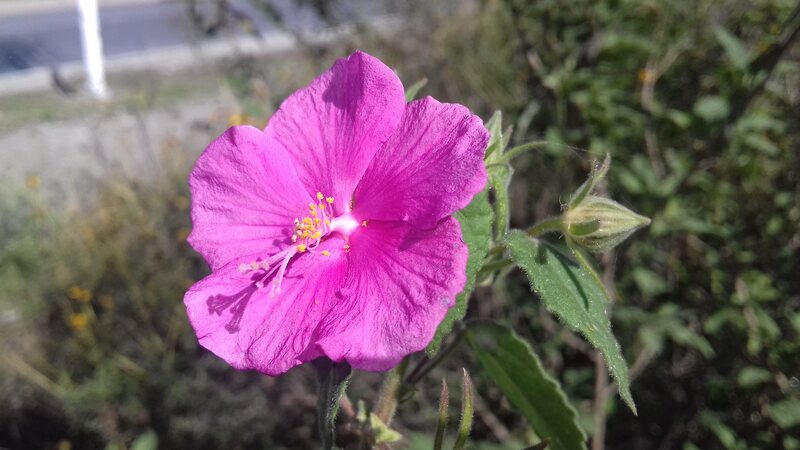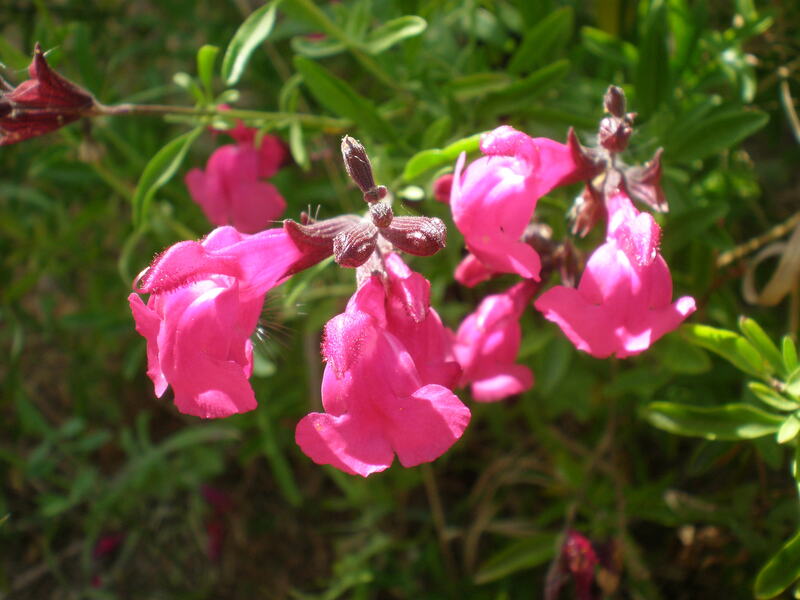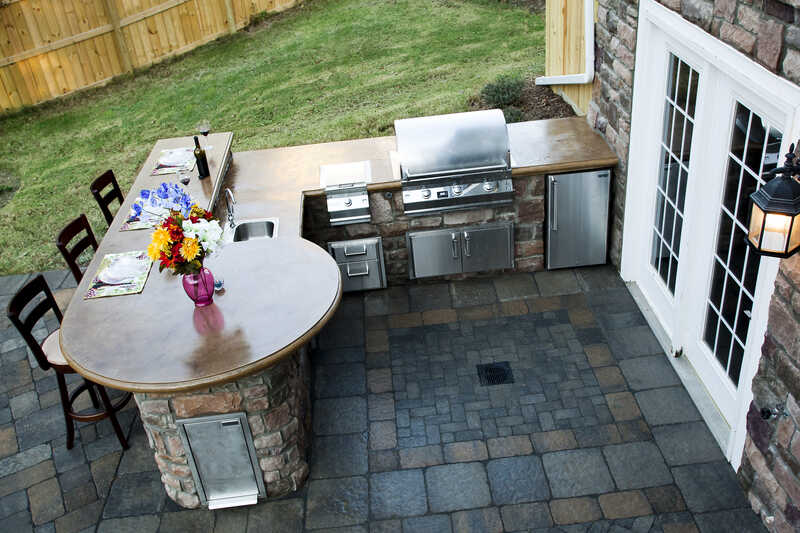9 Low-Maintenance Landscaping Ideas for Your Arizona Yard
BY WHITNEY LEHNECKER | MAY 15TH, 2023 | ARIZONA, LAWN CAREPushing a mower around the yard under Arizona’s scorching summer sun can be miserable. So if you find yourself melting in the searing heat one afternoon, you might wonder if there’s an easier way to get a nice yard. There is: Consider low-maintenance landscaping for Arizona that reduces your time and effort.
While all yards require some level of care, you can cut down on your time, effort, and expense with low-maintenance landscaping approaches that minimize the required amount of watering, fertilizing, mowing, and weeding. Let’s take a look at some of the best low-maintenance landscaping ideas for Arizona.
In this article:
3. Plant Ground Covers, Not Grass
5. Plant Long-Lasting Perennials
9. Get an Automatic Sprinkler System
FAQs About Low-Maintenance Arizona Landscapes
1. Grow Native Plants

Photo Credit: Zbigniew Niepokój / Wikimedia Commons / CC BY-SA 4.0
Go native and landscape with indigenous Arizona plants. Plants that thrive in the Arizona wilderness will also grow well in your yard.
Native Arizona plants already know how to survive in the wild without special care, so they won’t require much watering, fertilizing, or pest control. They also resist local pests and diseases. Planting a mixture of native wildflowers, trees, and shrubs means less maintenance for your yard.
Here are a few to start with:
Advantages of growing native plants:
- Provide a home for native wildlife
- Adapted to Arizona’s climate
- They resist local pests and diseases
- Eco-friendly since they don’t require many chemicals like pesticides or herbicides
Estimated Cost: The price tag of a native plant depends on the size and type of plant. Here’s a general price range for different types of plants:
| Plant Type | Price |
| Shrub | $15 to $50 |
| Vine | $5 to $50 |
| Tree | $200 to $1,500 |
If you are planning a more intensive project, installing a flower bed costs $585 to $3,300.
2. Grow Succulents
It’s not just native plants that thrive in the Arizona heat. Succulents are hardy, drought-resistant plants that thrive in hot climates, too.
Succulents don’t require much maintenance or care, so they are perfectly content on their own, without outside help. Unlike most plants, succulents prefer arid conditions and can perish if they are overwatered.
From cacti to agaves, there are many varieties of succulents to choose from, and homeowners can add a desert-like flare to their yard while simultaneously reducing the amount of effort required for lawn upkeep.
Advantages of succulents:
- Succulents thrive in drought and hot conditions
- They come in a variety of colors and sizes
- Have a unique desert aesthetic
- Are adaptable
Estimated Cost: As with any plant, the price depends on the type and size of the succulent. Usually, you can expect to pay about $10 to $75 per plant.
3. Use Ground Covers Instead of Grass

Photo Credit: Pxhere
Want a natural growing lawn without having to mow weekly? Then ground covers may be just the thing you’re looking for. Ground covers are low-growing plants that usually grow no more than a few inches tall.
Ground covers are decorative, require little maintenance, and spread over your yard the way a lawn would. Some ground covers flower during the year, adding a touch of floral color to your yard.
Look for groundcovers that grow well in Arizona USDA hardiness zone, which ranges from 6a to 10a. Some groundcovers that flourish in these zones include:
Advantages of ground covers:
- No mowing
- No fertilizing
- Attract fewer pests and weeds than regular grass lawns
- Keeps a natural green look
Estimated Cost: Installing ground covers usually costs around $4.50 to $26 per square foot, although prices vary depending on the type of ground cover. If you have to remove your old grass lawn first, that job will be an additional cost that will depend on the scope of the project.
4. Use Artificial Turf
One easy way to keep an evergreen lawn year-round without ever having to take care of it is to replace your traditional grass lawn with artificial turf.
With artificial turf, you never have to water or mow your yard. You won’t have to worry about the scorching heat burning your grass to a brown crisp or remember to fertilize it at the right time. Even without maintenance, your lawn will look the same all year long. And artificial turf can be great for playing games outdoors.
Advantages of artificial turf:
- Endures a lot of foot traffic
- Doesn’t require mowing or watering
- Stays green all year round
- Conserves water resources
- Won’t be ruined by too much heat or water
- Eco-friendly since it reduces the need for chemical pesticides, herbicides, or fertilizers
Estimated Cost: Different types of artificial turf are priced differently, but in general professional artificial turf installation costs $5 to $20 per square foot.
5. Plant Perennials

Photo Credit: Consultaplantas / Wikimedia Commons / CC BY-SA 3.0
Replanting new plants in your flower beds every year is a costly endeavor that takes a lot of time. Instead of buying annuals, switch to perennial plants.
Annuals last only a single year and biennials just two years, but perennials keep returning year after year. Using perennials spares you the time and effort of nurturing annuals as they adjust to their new home.
Try some of these perennials:
Advantages of gardening with perennials:
- Doesn’t need to be replanted every year
- Deeper root systems are better for the soil
- Saves money on plant purchases
- Plants last several years
Estimated Cost: Usually it costs $10 to $60 per plant, although costs vary widely across the board depending on what kind of perennial you get. If you hire a professional to plant your perennials for you, that will affect the cost of the project as well.
6. Xeriscape
Xeriscaping has become a hot new landscaping trend that reduces the amount of time and effort that needs to be spent on yard maintenance.
Xeriscaping requires little water, which makes it perfect for weathering Arizona’s heat. Natural rainfall should be the only water that xeriscaping needs.
Some xeriscaping methods you can try include:
- Replacing flower beds with rock gardens or decorative rocks
- Utilizing hardscapes to take up space
- Planting only succulents or drought-tolerant plants
- Creating a container garden with potted plants instead of using a traditional flower bed.
- Hydrozoning by grouping together plants with similar water requirements
- Using mulch to help your soil retain moisture
- Seeding your lawn with a drought-tolerant grass
- Avoiding turfgrass
- Using efficient irrigation systems such as a drip irrigation or sprinklers with built-in rain sensors
Advantages of xeriscaping:
- Needs little to no watering
- Conserves valuable water resources
- Less mowing
- Prevents weed growth
- Doesn’t need fertilizer or pesticide applications
Estimated Cost: Depending on the nature and scope of the project, xeriscaping projects usually cost $8,737 to $22,226. The upfront cost is expensive, but xeriscaping saves a lot of money on landscaping maintenance in the long run since it reduces both monetary and time costs for watering, fertilizing, and mowing.
7. Use Hardscapes

Photo Credit: Interlocking Concrete Pavement Institute / Flickr / CC BY 2.0
Maybe you don’t want to deal with a lawn at all. Hardscapes may be for you, then. Hardscapes take up space that your grass lawn would normally occupy, reducing the area where grass or other plants can grow. And with less lawn comes less mowing.
Hardscapes generally require little maintenance other than occasional cleaning, which is much less intensive than the regular upkeep of grass lawns.
Some ideas for hardscapes include:
- Decorative rocks
- Rock gardens
- Stone pavers
- Garden walkways
- Retaining walls
- Patios
- Decks
- Pergolas
- Gazebos
- Decks
- Fire pits
Advantages of using hardscapes:
- Decreases the amount of the yard that needs to be mowed, watered, fertilized, trimmed, or weeded
- Hardscapes are home improvements that increase the value and curb appeal of your home
- Conserves water resources
- Many hardscapes have recreational or practical uses
Estimated Cost: The cost of a hardscape depends on the type and scope of the hardscaping project. If you’re looking for a hardscape project that fits your budget, here is a list of price ranges for different hardscape projects:
| Project | Price |
| Decorative rock | $460 – $1,000 |
| Rock garden | $460 – $1,000 |
| Stone paver | $8 – $22 per square foot |
| Pergola | $2,000 – $9,000 |
| Gazebo | $4,828 – $9,930 |
| Patio | $2,000 – $6,500 |
| Deck | $4,000 – $11,000 |
| Fire pit | $500 – $3,000 |
| Retaining wall | $3,622 – $9582 |
8. Hold Moisture With Mulch
Mulch is as useful as it is simple. Applying mulch to your yard is a simple matter of buying a bag of mulch and spreading a layer of mulch over your flower bed. After that, it’s just a matter of leaving mulch to do its thing.
Mulch acts as a protective layer over the dirt of your plant bed by keeping moisture in and weeds out. There are two different categories of mulch to choose from:
- Organic mulch is made from the natural plant material and can be made from tree bark, grass clippings, or pine needles. Organic mulch decomposes quickly and has to be replaced every so often.
- Inorganic mulch is made of stone, rubber, or plastic. They don’t break down and so don’t need to be replaced as frequently as organic mulches.
Advantages of mulching:
- Reduces the number of weeds in your plant beds
- Retains moisture in your plant beds
- Inexpensive; some organic mulches can be made from materials found around your yard
- Conserves water resources
- Saves on water bills
- Easy DIY job
- Slows down the deterioration of soil
- Regulates soil temperature
- Improves home curb appeal
Estimated Cost: The price is dependent upon the type of mulch, as each mulch type has a different price tag.
- Wood mulch: $3 to $5 per 2-cubic-foot bag
- Rubber mulch: $7 to $10 per 0.8-cubic-foot bag
- Landscape gravel: $4 to $30 per 0.5-cubic-foot bag
- Bark mulch: $65 per cubic yard
- Wood chips: $70 per cubic yard
9. Get an Automatic Sprinkler System
An automatic irrigation system can save you a lot of time and energy spent on watering. Instead of watering your yard by hand, an automatic irrigation system allows you to pre-program your sprinklers for when and how long you want them to water your lawn.
Sprinklers can even be installed with a sensor that allows them to automatically adjust according to the local water levels.
Installing an automatic underground irrigation system might be an expensive investment, but it will save you a lot of time and make things easier for you and your lawn in the long term.
Advantages of an automatic irrigation system:
- Conserves water
- Reduces water bill costs
- Distributes water evenly around the yard
- Automatically waters the lawn when water levels are too low
- More eco-friendly than watering with a hose
Estimated Cost: On average, installing an automatic irrigation system will cost between $2,400 and $4,200. Above-ground sprinkler head attachments are much cheaper: between $9 and $36. However, they are not as convenient, as they can’t be automatically programmed like an in-ground sprinkler system.
FAQs About Low-Maintenance Arizona Landscapes
Whether you surround your landscaping plants with mulch or rocks is a matter of personal preference; both have benefits for your landscaping.
- Both are customizable and come in a variety of colors, textures, types, and shapes.
- Organic mulch requires more maintenance since it has to be replaced every so often.
- As it breaks down, mulch provides nutrients for the plants and soil.
- Rock mulch has more expensive up-front costs but the long-term costs are cheaper than wood mulch
- Gravel is better for high-traffic areas
- Wood mulch is better at retaining water while rock mulch tends to dry out the soil
- Rocks are fireproof, making them good for dry areas in Arizona that are prone to wildfires
Bermudagrass, buffalograss, and Zoysiagrass are the best drought-tolerant lawn grasses for Arizona. They can endure long dry spells and high amounts of foot traffic, making them good low-maintenance grasses for your lawn.
If you don’t want to spend money on mulch, it is possible to make your own using dead leaves, grass clippings and even food was. Note that organic mulch has to be replenished more frequently than inorganic mulch, but it can act as fertilizer for your plants as well by providing nutrients to your soil.
Escape the Heat This Summer
Redoing your yard’s infrastructure can reduce or eliminate lawn care maintenance. The more you minimize the yard work that needs to be done, the more you can enjoy the air-conditioned indoors and kick back with a cool glass of lemonade.
If the job seems too daunting to tackle on your own, consider using a lawn care pro near you.
Main Photo Credit : Lawn, Arizona / Nick Bastian / Flickr / CC BY-ND 2.0